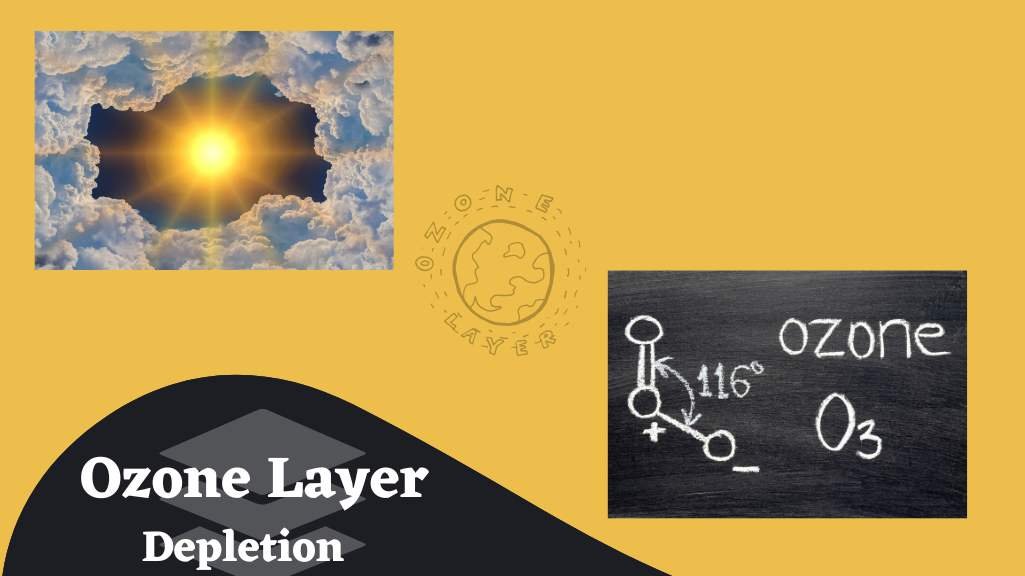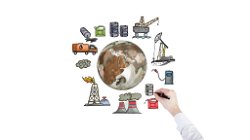The Ozone Layer and the Contemporary Economy
Devin Barton
. 3 min read
Depletion of the ozone layer refers to the process by which the ozone layer that is already present in the upper atmosphere becomes thinner. This takes place when the atoms of chlorine and bromine that are present in the atmosphere interact with ozone and cause the molecules of ozone to break down. One chlorine molecule is capable of destroying 100,000 ozone molecules. It is destroyed faster than it is created, which is a paradox. When certain compounds are subjected to high levels of ultraviolet light, they give off chlorine and bromine, which then contributes to the depletion of the ozone layer. These chemical substances are referred to as "Ozone Depleting Substances."

Types of Ozone-Depleting Chemicals Containing Chlorine and Bromine
In addition to methyl chloroform, other ozone-depleting chemicals that contain chlorine are chlorofluorocarbon, carbon tetrachloride, hydrochlorofluorocarbons, and chlorofluorocarbons. whereas bromine can be found in halons, methyl bromide, and hydrobromofluorocarbons, all of which are ozone-depleting substances. The most prevalent substance that depletes the ozone layer is known as chlorofluorocarbons. Only in situations in which the chlorine atom is involved in a reaction with another molecule does it not react with ozone.
The Impact of Pollution on Worker Productivity: An Analysis of Ozone Concentrations and Agricultural Worker Productivity
Instead, Joshua Graff Zivin and Matthew Neidell of the National Bureau of Economic Research ask in their paper titled "The Impact of Pollution on Worker Productivity" (NBER Working Paper No. 17004) whether or not reductions in ambient ozone concentrations can add to human capital and, as a result, increase productivity.
Impact of Ground Level Ozone on Agricultural and Forest Productivity:
This environmental productivity effect suggests that characterizing environmental protection as merely a tax on producers and consumers, to be weighed against the consumption benefits associated with improved environmental quality, may ignore potentially important effects of such policies on human capital. These benefits are associated with increased productivity in the workplace.
Affects on the surface of the skin:
Basal cell carcinoma, squamous cell carcinoma, and malignant melanoma are the three most common forms of skin cancer. The surgical removal of these cancers is a simple procedure. Melanoma is the most dangerous form of skin cancer, but fortunately it is also the form that is least common.
Influences on the body's immune system include:
Our capacity to ward off illness is diminished by UV exposure. The immune system is the first line of defense that the body has against harmful bacteria and viruses. Recent studies have shown that prolonged exposure to UV can in some cases cause certain viruses to become active.
The Montreal Protocol: Addressing Ozone Depletion Through Reduced Production and Consumption of Ozone-Depleting Substances
The international community came together in 1987 to create the Montreal Protocol on substances that deplete the ozone layer in order to address the problem of the ozone layer being destroyed. It was the first international treaty to be signed by all countries of the world, and it is widely regarded as the United Nations' most significant achievement in the field of environmental protection throughout the organization's history. Reduced production and consumption of ozone-depleting substances is one of the goals of the Montreal Protocol, which aims to lessen the amount of these substances that are present in the atmosphere in order to preserve the ozone layer that surrounds the Earth.
Revision of EU Regulation on Ozone-Depleting Substances (EC) No 1005/2009
The EU regulation known as Regulation (EC) No 1005/2009 on substances that deplete the ozone layer lays down rules on the production, use, trade, recovery, recycling, reclamation, and destruction of ODS. Additionally, it establishes requirements and measures for products and equipment that contain these substances. The current ODS regulation was the subject of a proposal that was submitted to the European Commission on April 5th, 2022, with the intention of having it repealed. To achieve additional emission reductions in line with the European Green Deal, to ensure more comprehensive monitoring of ODS, to reduce the administrative costs by simplifying the rules.
Progress in Reducing Emissions of Ozone-Depleting Substances and the Recovery of the Ozone Layer
The emission of gases that deplete the ozone layer had an effect on the ozone layer of the earth, which is a layer that absorbs the majority of the ultraviolet radiation from the sun. Up until the 1980s, the rate of growth of emissions was quite rapid. Since that time, the world has made significant strides forward: the near-elimination of ozone-depleting substances and the trend towards recovery of the ozone layer are arguably among the most successful international environmental collaborations to date.
More Stories from
Environmental Pollution: A Looming Crisis That Demands Urgent Action
This article provides a comprehensive overview of environmental pollution, including its various forms such as air, water, soil, and noise pollution.
Creative Uses for Banana Peels You Never Thought Of
This article explores the many uses of banana peels beyond their typical disposal, including as fertilizer for plants, skin care treatments, teeth whitening, shoe polish, silverware cleaner, and bug bite relief.
Unveiling India's Volcanic Secrets: A Geological Overview
Explore India's unique volcanic history and the enduring forces of nature that continue to captivate scientists and adventurers alike.
Zero-Waste Living: Practical Tips for Reducing Environmental Impact
Discover the power of zero-waste living as this article offers practical tips and actionable advice for reducing your environmental impact.
Eco-Friendly Practices: How Individuals and Businesses Can Make a Difference
Discover the Power of Eco-Friendly Practices: Learn how individuals and businesses can contribute to a greener world by adopting sustainable measures.










.png?width=40&aspect_ratio=1:1)


.png?width=40&aspect_ratio=1:1)